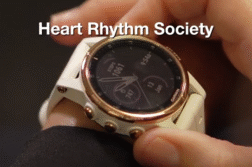WASHINGTON, D.C. (Ivanhoe Newswire) – A healthy heart beats 60 to 100 beats per minute, but when that rate slows down, patients require a pacemaker. Traditional versions are bulky and need two long wire leads connected to an implanted battery, but now, a wire-free pacemaker is changing the game.
“From the moment that we’re born, it’s designed to automatically send out 60 to 80 electrical signals a minute,” explains Cyrus Hadadi, MD, Associate Director of Cardiac Arrythmia Research at MedStar Washington Hospital Center.
But the heart often loses the ability to regulate itself.
“So, instead of 60 or 80 beats a minute, it sends out 35 or 40,” Dr. Hadadi adds.
So, for years, pacemakers have been implanted in a patient’s chest and leads, or wires, were threaded through the patient’s body.
Zayd Eldadah, MD, Executive Director of Cardiac Electrophysiology at MedStar Health explains, “Historically, what has been available to us, is a traditional device that involves a fairly bulky metal unit that contains the battery and circuitry required to run the pacemaker and two wires.”
This hospital is among the first in the nation to implant what’s called the Aveir Dual-Chamber Leadless Pacemaker. This tiny device is inserted through a vein and implanted in the heart. No surgery. No wires.
Dr. Hadadi says, “With these new pacemakers, nobody will even know you have one.”
Patient Jonathan Rose was recently offered both types of pacemakers and made a quick decision.
“Gee, it sounds like a no-brainer to me, if you can have all these, not have a pouch in your chest, not have to spend six weeks trying to figure out whether you can have a golf swing again or whatever,” he says.
Dr. Hadadi says, “I want to see a day where everybody who needs a pacemaker, gets a leadless pacemaker and we don’t have to worry about problems with decade’s old leads running through your veins and into your heart.”
The Aveir DR Leadless Pacemaker system was part of a clinical trial at MedStar and received regulatory approval in June 2023.
Contributors to this news report include: Donna Parker, Producer; Kirk Manson, Videographer; Roque Correa, Editor.
To receive a free weekly e-mail on medical breakthroughs from Ivanhoe, sign up at: http://www.ivanhoe.com/ftk
Sources:
https://irp.nih.gov/catalyst/28/2/technology-transfer-biologically-engineered-pacemaker
https://www.ncbi.nlm.nih.gov/pmc/articles/PMC8981136/
MEDICAL BREAKTHROUGHS
RESEARCH SUMMARY
TITLE: THE NEW “NO SURGERY, NO WIRES” PACEMAKER
REPORT: MB #5382
BACKGROUND: A pacemaker is a small, battery-powered device that prevents the heart from beating too slowly. Surgery is needed to get a pacemaker and the device is placed under the skin near the collarbone, it’s also called a cardiac pacing device. It stimulates the heart as needed to keep it beating regularly. A pacemaker may have two parts one is a pulse generator, It controls the rate of electrical signals sent to the heart and leads. These are flexible, insulated wires and they send the electrical signals needed to correct an irregular heartbeat. A pacemaker only works when it senses trouble with the heartbeat. If the heart beats too slowly, the pacemaker sends electrical signals to correct the beat. In the United States, about 200,000 electronic pacemakers are implanted annually.
(Sources: https://www.mayoclinic.org/tests-procedures/pacemaker/about/pac-20384689
https://irp.nih.gov/catalyst/28/2/technology-transfer-biologically-engineered-pacemaker)
DIAGNOSING: Pacemakers are used to treat certain types of arrhythmias, as well as heart failure, a condition that occurs when the heart cannot pump enough blood to the body. Not everyone with arrhythmia needs a pacemaker. The most common reason people get a pacemaker is their heart beats too slowly called bradycardia, or it pauses, causing fainting spells or other symptoms. In some cases, the pacemaker may also be used to prevent or treat a heartbeat that is too fast, that’s called tachycardia, or at an irregular beat. Pacemakers may also be used to help your heart chambers beat in sync if your heart isn’t pumping enough blood to your body.
(Source: https://www.nhlbi.nih.gov/health/pacemakers/who-needs)
NEW TREATMENT: MedStar Washington Hospital Center is one of a select few institutions nationwide now offering patients with abnormally slow heart rates breakthrough technology that delivers treatment by a revolutionary new technology: two tiny leadless pacemakers implanted within the heart, each smaller than a AAA battery. They are inserted through a catheter in a large vein in the thigh with the help of X-rays, the two devices are secured within the upper and lower chambers of the heart, respectively, to normalize its rhythm. This new technology offers advantages over traditional pacing, as it can eliminate long-term problems such as inflammation, scars, wire insulation breaks, vein blockage, and device infections. The procedure typically takes less than an hour, and patients can go home the same day.
FOR MORE INFORMATION ON THIS REPORT, PLEASE CONTACT:
So Young Pak
If this story or any other Ivanhoe story has impacted your life or prompted you or someone you know to seek or change treatments, please let us know by contacting Marjorie Bekaert Thomas at mthomas@ivanhoe.com




